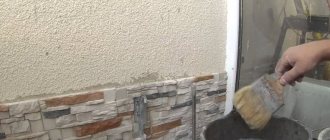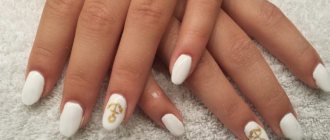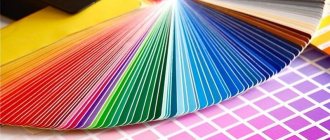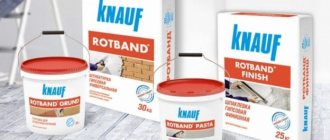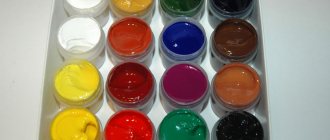If you read any polymer clay groups or forums, you will notice that one of the most frequently asked questions is “What polymer clay sealer should I use?” Everyone has their favorite sealant, and the answers vary depending on your needs and product availability where you live. But perhaps we are asking the wrong question. I think the first question should be, “Does polymer clay need to be coated?”
You must coat the polymer clay
- You don't need to coat the polymer clay. Baked polymer clay is a strong plastic and therefore more durable than any sealant.
- Sealants and varnishes will not prevent breakage. If your projects are fragile, turn to the baking process.
- Use varnish to protect fragile surfaces such as chalk, pigment or mica.
- Use varnish to change the sheen level of your project.
- Many varnishes make polymer clay sticky.
- Spray varnishes are almost always incompatible with polymer clay.
- For a glassy finish on plain polymer clay, sanding and polishing is an excellent option.
Basic options for working with clay after baking
Work that polymer clay requires after baking:
- grinding
- polishing
- primer and painting
- varnish coating
Within the framework of the article, we will only touch on the basics, which definitely need to be paid attention to in more detail. In the future, on the pages of the opolimerke.ru blog we will return to this. Write in the comments what you would like to discuss first and subscribe to blog updates so as not to miss new publications. In the meantime, let's begin.
When to coat polymer clay
People often want to coat their polymer clay creations to protect them from damage during use. In most cases this is not necessary. Once properly fired or cured, polymer clay turns into a durable, hard plastic that is waterproof, impact-resistant, and quite durable. Since it's such a durable material, it probably won't surprise you to learn that it's actually more durable than any sealant you'll treat it with. Sealants, varnishes and finishing materials do have their purposes, but the exposed clay itself does not need to be sealed for protection. Here are a few reasons why you might want to coat polymer clay:
Protect surface coatings
When you decorate your polymer clay project with chalk, paints, mica powders, metal pastes, or metal sheeting, these treatments are applied to the surface of the polymer clay and are not as durable as the polymer clay itself. Designs using surface treatment should therefore be sealed for maximum durability. In the case of jewelry, the maker must be protected from any pigments, dyes or micas that fall on his clothing or skin. If the project is purely decorative and will simply sit on a shelf, sealing is not necessary. But be aware that cleaning any accumulated dust may compromise the surface finish.
Polymer clay artists often use acrylic paint to color their projects. Is it possible to coat items with acrylic paint? Depends. The paint used to antique the textured surface mostly wears off, and the remaining paint is fairly well protected in the "nooks and crannies" of the piece. In this case there is no point in covering. Thin layers of acrylic paint can sometimes peel or scrape off, or come off if the item is washed. In these cases, it is better to use a sealant. Even when the paint layer is thick and durable, a sealant can provide a brighter, more durable finish, just like a clear coat over the colored paint on your car. You will be the best creator for your specific project.
Some tips for applying varnish
As a rule, at least two layers should be applied, in special cases up to five. Believe me, the difference is very big, the more layers, the deeper the color and the more spectacular the look, especially for products made of metallized and translucent plastic.
The varnish is finally considered dry after a week, but this does not mean that the product cannot be worn - it simply does not need to be wetted. This, by the way, applies not only to acrylic varnish, but also to acrylic paints. If you do not dry it thoroughly between repeated coats, or wet it ahead of time, the varnish may come off as a film or bubble.
There are two ways to varnish beads: apply varnish with a brush and dip them in varnish. Let us explain the second method. The product on the stick is completely dipped into a container of varnish, then the excess varnish is allowed to drain off, twisting around the axis for a while so that the varnish is evenly distributed and placed to dry, stuck into a piece of hard foam rubber or foam. Usually, after a couple of minutes a small drop will form at the bottom - remove it with a soft brush while it is still liquid. After the initial drying of the varnish, you can roll the toothpick in the bead to make it easier to pull it out later. After final drying, the beads are removed from the toothpicks with a twisting motion so as not to break it off and it does not remain in the bead.
************************** Polymer clay is available in many color variations, but some projects still require the use of paints. Test your paints: Some paints react chemically with polymer clay. Paints such as enamels, varnishes and regular oil paints do not dry on polymer clay, leaving the surface sticky. If you have such paint, test it on a small piece of plastic. In turn, acrylic and oil-based water-soluble paints are perfect for working with polymer clay. Painting plastic products requires a few basic tools. Palette. You can buy it at an art store or make it yourself using any smooth plastic or glassware. Water container. Any jar or mug that will not be used for drinking in the future will be suitable as a container. Paper napkins or toilet paper. Newspapers. They will help you protect your work surface; if you don't care about the cleanliness of your work area, you can skip this point. Brushes. For a basic set, you will need several brushes with synthetic bristles of different shapes and sizes. Sponge. Useful for creating texture effects. Priming the Surface Acrylic paints do not always adhere well to polymer clay surfaces, so some projects require priming the surface before painting. There are two main types of primer application: spraying and brushing. The primer is black and white. Acrylic paints It is recommended to use artistic acrylic paints rather than construction ones, because... art paints of the best quality. If you need to tint light or translucent plastic by mixing paint into it, then it is not recommended to add acrylic paints to it (it is better to add ink), because The water contained in the paint evaporates during the firing process, and bubbles and unevenness may appear on the surface. However, some people talk about very successful experiences of mixing acrylic paints with plastic. The best way to test this is to do some experiments yourself using small pieces of plastic. Acrylic paints dry out quickly, and we can give some tips on how to avoid this: • Place a small amount of paint on the palette. • If you plan to use the color in the future, then mix the paints in small plastic jars that can be closed with a lid (for example, gouache). • Add a drying retardant. You can buy it in the same place where acrylic paints are sold. If this is your first experience using acrylic paints, then practice first on a piece of paper and learn the basic techniques. Please note that acrylic paints darken as they dry and the color obtained on the palette will be noticeably different from the final color on the product. This point should always be taken into account when working with acrylic paints. To give a translucent plastic product a slight color tint, apply paint and then blot off the excess with a sponge or napkin. To age the surface, it must be tinted in such a way that the paint does not cover the entire surface, but rather lingers in small irregularities and wrinkles. To do this, you need to apply the paint, and then carefully, without applying any effort, walk over the surface with a sponge or napkin. Oil paints Unlike acrylic paints, which can cause bubbles when mixed with plastic, oil paints mix freely with polymer clay without any problems. or consequences. Oil paints can be used in the same way as acrylic paints, with the only exception that the complete drying time for oil paints reaches up to six months and this makes it impossible to use them in the crackle technique. You also shouldn't varnish them, otherwise they won't be able to dry completely. However, the long drying property of oil paints is not always a disadvantage and is used in some techniques. Please note that some oil paints can react chemically with polymer clay and the surface will always remain tacky. Therefore, before using paint, be sure to test it. Some tips for choosing oil paints: • Ask a friend or find discussions on the Internet about what brand of paint they use. • Look for oil paints at the store that are specifically oil-based, not petroleum-derived. • Conduct your own tests if you already have oil paints. Apply a small amount of paint to the baked plastic. If after a month or more the surface begins to stick, then it is better not to use such paint. If the surface remains dry, then everything is fine. Below are several ways to use oil paints with polymer clay: • Oil paints can cover both small parts and large surfaces of baked plastic. To fix the paint, re-bake the product for a few minutes. • To tint liquid plastic, add a small amount of oil paints to it to obtain pastel colors. • Use oil paints to create an aged effect. Apply paint to the surface of the product and then carefully wipe off most of it. • Cover layers of polymer clay with paint using the Mokume gane technique • Oil paints are successfully used in the technique of simulating natural stones (agate, granite). • Mix oil paint with unbaked polymer clay to create a marbled effect.
Easy to clean
Polymer clay is not porous like wood or unglazed ceramics. It will not absorb or retain water. However, polymer clay may have small pits on the surface depending on the method you used to create the piece. Some clay stamps, such as Sculpey III and Souffle, tend to have a porous surface (which is why acrylic paint holds so well on these stamps). This can make dirt and makeup difficult to remove from an item without washing with soap and water. This can also be a problem when the clay is created with a finely textured surface. Also, sometimes the colors in your cosmetics can permanently discolor the light colored clay balls. In these cases, sealing the clay makes sense.
Metallic paints
Metallic or iridescent acrylic paints (or inks) are used in the same way as regular color paints. But with the help of them you can create interesting effects, such as aging of the surface or crackle, and use them in the Mokume gane technique.
If you want to create a crackle effect, you should test the paint first because some paints do not crack when stretched, but rather stretch.
Metallic inks can be used in much the same way as acrylic paints.
When NOT to coat polymer clay
Sealants and varnishes are great tools to use when the time is right. But there are reasons why trying to cover your project may not be a good idea. Here are some reasons.
- Many sealants, varnishes and coatings become sticky or cloudy over time, ruining your project. What works for one person may not work for another. If you don't know how the sealant you choose will perform, and if you're not sure you need to use it at all, it may be best to reconsider your decision. Always test some samples before using sealant on anything you don't need.
- Since most polymer clay varnishes are themselves some sort of thin plastic coating, they can often be removed from a project if you try your best. If the product receives many rework attempts, the varnish may not be strong enough.
- When making glass products, using a glossy sealant is no substitute for creating a smooth object. Applying a glossy finish over a project full of tool marks and fingerprints will only highlight them rather than disguise them, making your piece look sloppy and unprofessional.
- Using sealant on a heavily textured item can go wrong. Wax is great for smooth surfaces, but it will accumulate in small cracks in a textured item and look terrible. Liquid varnish like Varathane can also build up or pool in highly textured areas, creating an appearance that is not at all what you expected. You can seal textured items with varnish, but you must be careful in your application.
Pearlescent powder
Pearlescent powder helps create iridescent and metallic effects on the surface. Such powders can be mixed with acrylic solvents, varnishes, liquid polymer clay, or directly applied to unbaked plastic.
Powders with a “metallic” effect are used to imitate metal elements of costume jewelry, imitate pearls and shells, as well as many other effects. Remember that the spool is small, but expensive: despite the fact that powders are sold in small containers, they last a long time.
Use the right sealant for your project
There are many types of polymer clay sealants and glazes. Here are some tried and true sealants to recommend.
Glossy sealants
Varathane is a brand of polyurethane varnish. It has been a favorite varnish for polymer clay artists for many years. It comes in glossy, semi-gloss and satin.
Pearl Ex Varnish is made by the same company that makes the famous mica powders. But it's just varnish. It works well on all brands of clay, but does not give a super glossy finish.
Aleene Ge l Jewelry Pendant is a glossy dimensional glaze that can be used on most clays, but do not use it on Fimo as it may become sticky.
Epoxy resin is a clear, thick coating that is understandably gaining popularity among polymer adhesives. It is extremely strong and durable, more durable than any other finish. But it takes some practice to get used to using and is known for causing swear words. But once you get the hang of it, it works very well. Favorite brands are ICE Resin, Envirotex Lite and Magic Glos (a brand of UV curing resin).
Kato Liquid Polyclay can be used as a sealant. Simply apply a thin layer with a brush or sponge and then bake in the oven. Once cured in the oven, you can use a heat gun to further cure to achieve a crystal clear, glossy finish.
Matte sealants
Translucent Liquid Sculpey is another brand of liquid clay, but it has a matte finish when cured. To get this effect, use a cosmetic sponge to apply TLS to your piece, then bake in the oven. Do not work with a heat gun, otherwise the effect will not be matte.
Cernit Matte Varnish gives a nice, smooth, dry finish on all brands of clay. It's not very matte, but it gives a low-shine satin finish that looks and feels great.
DuraClear Ultra Matte Varnish is a standard matte varnish that does not have any shine. It works great on all brands of clay except Kato.
Natural polished look
If you like the look of polymer clay that has been sanded to a very fine grit and sanded, you'll love the way that adding a layer of wax gives these pieces a natural appearance.
Renaissance Wax is a beloved brand of high-quality wax that has a great marketing program and is priced to match. Don't get me wrong, I love Ren Vax. But want to know the secret? Paste Wax and regular shoe polish will work just as well and are a MUCH better price. Remember that wax doesn't work well on items with a fine texture (like when you use sandpaper or a sponge to cover up fingerprints). The wax will collect in the pits and look terrible.
Sealant for delicate textured surfaces
Sometimes the act of scrubbing or rubbing on the sealant can interfere with surface treatments such as mica powders. And the sealant can actually dissolve the surface treatment, as happens when you apply Varathane to alcohol inks. And sometimes you want to coat finely textured surfaces without getting air bubbles or pooling. A spray varnish would be good in these cases, but most of these varnishes can cause the polymer clay to become sticky over time. There are two brands of spray varnishes that are completely safe for clay and really give a great effect. PYM II is one brand and Helmar Crystal Kote Matte is another. They set and stabilize mica powders and can help seal alcohol inks in a quick, easy coat. After this, you can apply subsequent layers to get a tighter seal, or you can use a different type of sealant. Yes, you can use Varathane or Ren Wax over PYM II and Helmar.
Sealants to Avoid
Just as there are good sealants on the market, there are also bad ones. Keep in mind that many of these have been used by many people without any side effects. But they are also known for their unsatisfactory results.
Future Floor Finish , now called Pledge Floor Care (and very similar to the European product Klear), is a very clear, thin, watery finish that is a favorite of beginning polymer clay artists. It gives a nice glossy finish, dries quickly, smells great, and is easily accessible. The only thing is that it is not very durable. There are better options, such as any of the sealants that are mentioned above. This sealant is for things that won't show any wear and tear, such as figurines and models. But for jewelry, it will simply wear off too quickly.
Liquitex Varnish is an artist's grade varnish that comes in gloss, matte and satin finishes. Tests show that it is cloudy on dark colors and sticky on some brands of clay. There are better options such as Varathane or Pearl Ex Varnish.
Dimensional glazes are thick, clear, one-part glazes that can be applied thickly to create a glossy, glass-like finish. Some are better than others, but all can become cloudy over time. With these glazes, success is too variable.
Nail polish is often recommended as a paint or glaze in craft blog posts. There will almost always be tears later because the plasticizer in the polymer clay softens the polish, making it tacky over time. That is, if it dries at all.
Oil-based varnishes often work on polymer clay, but will noticeably yellow over time. This is especially noticeable on white clay, of course.
Mod Podge is an adhesive and decoupage medium. Craft blogs have also sometimes recommended it as a polymer clay sealant. Mod Podge is actually made from the same material as plain white glue. This is not a real sealant. You wouldn't cover your beads with glue, would you? Just say no.
Spray atomizers can also have unpredictable and disappointing results. Sometimes the product never dries, sometimes it becomes soft and sticky after months. The plasticizer in baked polymer clay can soften the spray varnish, so even a good, trustworthy brand of liquid varnish may not work very well as a spray varnish on polymer clay. If you need a spray, do yourself a favor and order some PYM II. This is one of the few known sprayers that is completely safe to use with polymer clay. Only PYM was found to have universally good results on all grades of clay that were tested.
Which varnish to choose for plastic
If varnish is used as additional protection, then in this case it is recommended to select conventional solutions specifically designed for plastic. Such compositions after application can create a glossy shine or matte film.
Paints and varnishes may contain pigments that provide additional color to the coating. Let's figure out together what compositions are suitable for processing plastic?
Before purchasing a paint and varnish composition, it is recommended to familiarize yourself with the components that were used for its production. Professional specialists will help you make your choice.
The instructions on the packaging allow you to determine the scope of use of the product, its characteristic properties and precautions.
- Liquids containing alcohol, acetone and chemical solvents are not suitable for processing plastic.
- These components will trigger a chemical reaction between the liquid and the polymer plastic.
- For work, it is better to use brands with water-soluble components.
- After application, they are evenly distributed on the surface, dry quickly and do not form caustic compounds.
For example, polyurethane or acrylic varnish based on water components without a latex additive is not recommended for processing plastic. The fact is that during drying it is accompanied by the appearance of streaks. Over time they become the cause of chips and scratches.
As for the degree of dullness, the compositions are divided into:
- Glossy;
- Semi-gloss;
- Matte.
One of the important components of paint and varnish products is the presence of a special protective filter that allows you to preserve the finished coating from ultraviolet radiation.
If this component is present in the composition, then you can choose this mixture for processing plastic. Over time, such a coating will not turn yellow or deform due to temperature changes and solar insolation.
- Polyurethane types of varnish after drying are accompanied by the appearance of a protective film.
- It allows you to preserve the appearance of the product from scratches and possible deformations.
- The painted surface is easy to wash and clean using household chemicals.
- The mechanical impact of abrasive particles does not change the quality of the protective film. The presence of a glossy sheen helps achieve a flawless look.
The undoubted advantage of water-based varnish is their environmental composition. They do not harm the body and do not contain aggressive components. When working with this varnish, no pungent odor is formed.
Does polymer clay need to be sealed?
It is often suggested that polymer clay must be coated with a sealant to protect it from water damage. Cured polymer clay is water resistant and does not require sealing against moisture. Most seals are not completely waterproof and can be damaged by prolonged contact with moisture. (Washing items quickly is not usually an issue with sealant.) If you are using polymer clay to decorate the outside of glasses, you do not need to coat the polymer clay to make it wash-safe. Dishwashers are not recommended for use.
If you are making polymer clay for use in aquariums or outdoors, not only is sealant not needed, but it will most often deteriorate much sooner than the clay. Polymer clay is weather resistant and will not break down or disintegrate once exposed to the elements. But the color of some clays may fade in the sun. You could say that a UV sealant will protect your work, but in reality this is highly questionable.
There is an opinion that the sealant will protect a weak polymer clay sculpture from breakage. Coating with varnish or sealant will not make your product stronger. This will not prevent the pieces from breaking off. If small pieces such as ears or hands are not glued down properly, a layer of sealant will not help them stay in place. Upon first damage or rough handling, such parts may immediately fly off from the main form. One might assume that if you coat the piece with a thick layer of resin, it will provide structural support. But it would also look rather unsightly.
Tests and samples
Regardless of what anyone tells you, it's always best to test out any new materials or methods yourself before using them on a large or special project in which you've invested a lot of time. This way you will know about problems before anything breaks. For example, Varathane is a wonderful sealant. But you have to learn how to apply it without creating bubbles, and the best way to do this is to do some tests and see what works best for you. Each sealant will have its own quirks and problems. Testing and creating samples will help you find better ways to use them.

